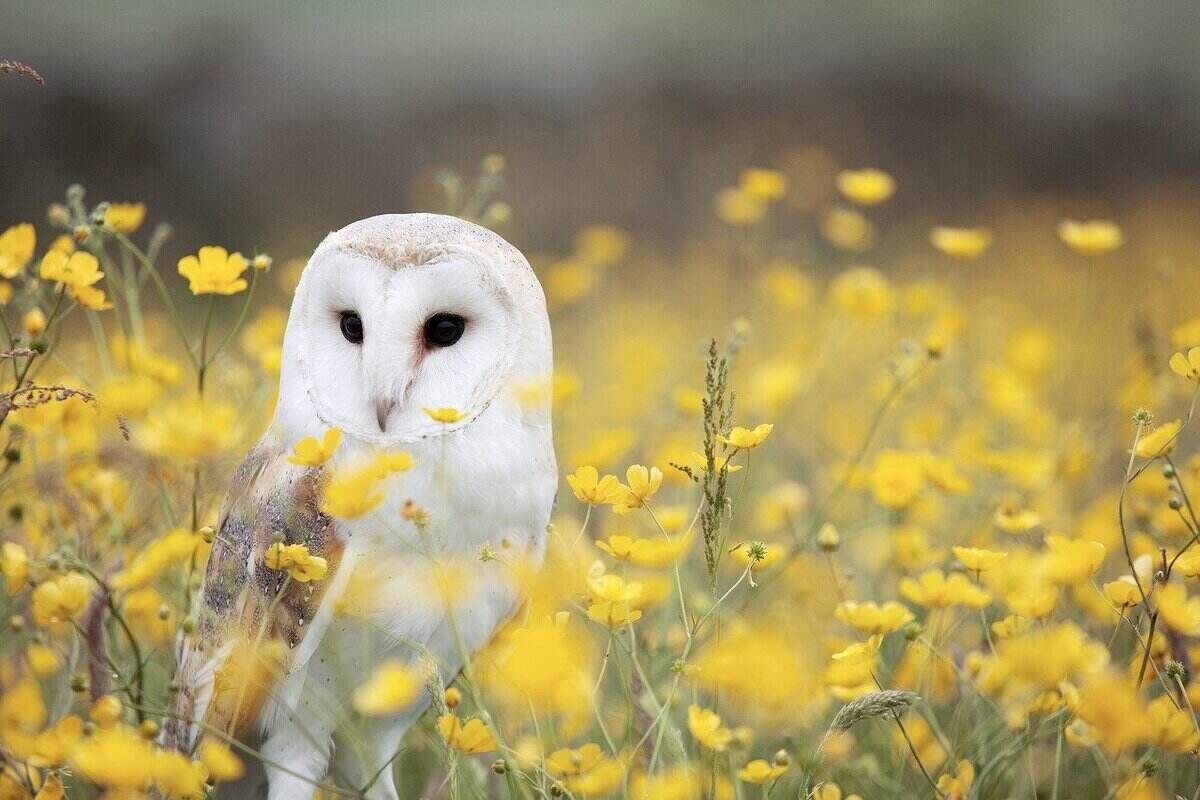
The benefits of native plants in landscaping are plenty. Native plants save you money, time, and energy, and they also can brighten your day with hummingbird or butterfly sightings in your garden or out your window.
The biggest advantages of native plants over non-native plants? Native plants are low maintenance and eco-friendly.
What makes native plants so special and favorites of gardeners and landscapers?
Native plants have adapted to a region’s soils, climate, and rainfall levels without the need for synthetic fertilizers and pesticides.
Here are 10 reasons why native plants are such a great addition to your yard:
- Low-Maintenance Alternative to Turfgrass
- Save Water
- No Fertilizers or Pesticides Needed
- Resistant to Local Climate
- Rarely Invasive
- Control Erosion
- Restore Natural Habitats
- Preserve Biodiversity
- Reduce Rainwater Runoff
- Enhance Beauty
1. Low-Maintenance Alternative to Turfgrass
Most lawns grow non-native turf grasses. This isn’t a big surprise, considering we spend so much time fertilizing and watering the grass. It needs our help to thrive in an unfamiliar area.
If maintaining your turf lawn is a hassle, consider turning a portion of the yard into a native plant garden. Downsizing your lawn will also reduce your use of lawn equipment, such as lawn mowers, edgers, and weed whackers. The less gasoline and electricity you use to care for your lawn, the kinder you are to the planet.
The bottom line: Transforming a section of your lawn into a native plant garden will save you time, money, and energy. It’s better for the planet, and local pollinators will thank you, too.
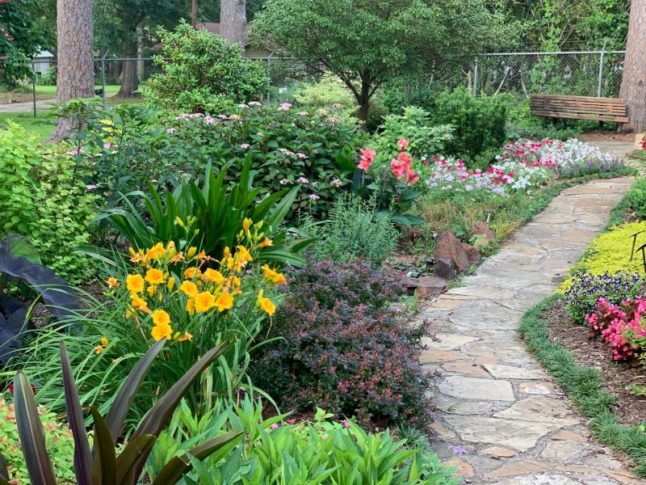
2. Save Water
As the Earth’s population grows, we must conserve safe drinking water. The Earth might be full of water, but only 2.5% of water is freshwater. And the majority of total freshwater (about 68.7%) is in glaciers and ice caps.
One place where you can start using less water is in your landscape. Native plants require far less irrigation water than non-native plants. Native plants grow significantly deeper roots than non-native plants, which helps them retain water for long periods.
Native plants have also adapted to the local rainfall levels, which means they can usually flourish without supplemental irrigation. Non-native plants are in unfamiliar territory, so they’re not as accustomed to the available rainfall.
The bottom line: Native plants, in general, require less supplemental irrigation than non-native plants.
3. No Fertilizers or Pesticides Needed
Native plants have evolved to flourish with the natural fertility available in their native soils, which means applying synthetic fertilizer isn’t always necessary. If you take good care of your native plants, they won’t need supplemental nutrients.
Native plants also have a built-in security system that thwarts pests and disease, so they can stay healthy without pesticides.
The less fertilizer and pesticide you need to apply to your landscape, the better. Here’s why:
- Fertilizers and pesticides are expensive. The less fertilizer and pesticides you buy, the greener your wallet.
- Spreading fertilizer and spraying pesticides less often saves you time and energy.
- Fertilizers and pesticides can pollute nearby water systems via rainwater runoff. Excessive levels of nitrogen and phosphorus (often found in fertilizer) may trigger an algal bloom that destroys the aquatic ecosystem.
The bottom line: Native plant species require little or no fertilizers or pesticides, unlike non-native plants.
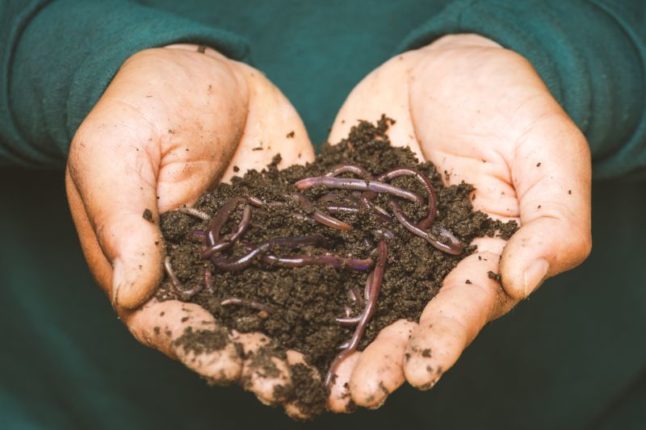
4. Resistant to Local Climate
Native plants are much better suited for the local climate than non-native plants. For example, if you live in an area with high winds, most native plants will have evolved to become wind resistant.
Similarly, if you live in a coastal area with frequent hurricanes, most native plants can tolerate the salt water that hurricanes spray into the air.
The bottom line: Native plants are more resistant to local climate conditions than non-native plants.
5. Rarely Invasive
Another benefit of native plants in landscaping? Native plants grow where they are planted and are unlikely to take over your yard or garden.
Many non-native plants have invasive qualities. While a beautiful vine, English ivy is an aggressive invasive plant that can outcompete native plants and even kill trees. Invasive plants are difficult to contain and exceptionally high-maintenance.
The bottom line: Native plants are rarely invasive. They’re easy to contain in one space and require little maintenance.
6. Control Erosion
Thanks to their deep root systems, native plants can help minimize erosion by stabilizing the soil. Non-native plants have shallow root systems that won’t anchor the soil as well.
So why is preventing erosion considered a native plant “benefit”? Let’s take a look at some of erosion’s harmful effects:
- Less fertile soil: Topsoil is the top layer of soil, and it’s exceptionally vulnerable to erosion. It contains high levels of organic matter and nutrients that are vital for crop growth. The more topsoil your garden loses to erosion, the less fertile soil you have for crop growth.
- Chemicals in runoff: Soil in the landscape is often filled with fertilizers, pesticides, and herbicides. When stormwater runoff dislodges the soil, the synthetic chemicals come along for the ride and pollute the aquatic ecosystem.
- Sediment: As erosion breaks down soil, it creates a substance known as sediment. Sediment often settles into bodies of water as a pollutant via rainwater runoff.
- Natural disasters: Erosion can cause dangerous mudslides, landslides, and floods.
The bottom line: Native plants have deep roots that help prevent erosion.
7. Restore Natural Habitats
Native plants play a critical role in their environment as pollinators and sources of food and shelter for wildlife. Local animals, such as hummingbirds, songbirds, native bees, and squirrels, rely on native plants for fruit, nuts, seeds, nectar, and shelter.
While non-native plants can also provide these things, animals may interact differently with unfamiliar plants.
The bottom line: Native plants provide a familiar habitat and food source for wildlife.
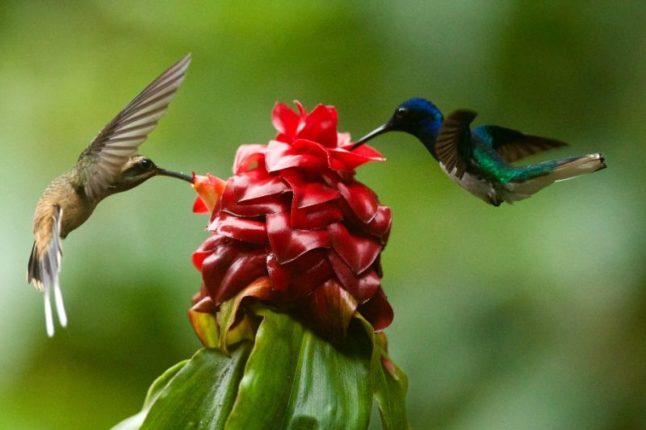
8. Preserve Biodiversity
Biodiversity is the variety of life on Earth and the interconnection between all living things. From the humongous fungus to microorganisms, every living thing affects the ecosystem.
By growing native plants, you help preserve the natural connections between your landscape’s organisms, connections that have been growing and changing for hundreds of years.
The bottom line: For centuries, native plants have played an essential role in their ecosystem that’s worth protecting.
9. Reduce Rainwater Runoff
Growing a rain garden with native plants reduces runoff containing pesticides, herbicides, and sediment.
A rain garden helps trap and slow down the rainwater so that the soil can soak up the water before it travels into a storm drain. And if you grow native plants, their deep roots help filter the water and remove toxic substances.
The bottom line: Native plants help trap and filter rainwater runoff. Less runoff means healthier water systems.
10. Enhance Beauty
Native plants are beautiful – in addition to being good for the environment and easy on your wallet. Plant some flowers to draw bees and hummingbirds to your yard, a ground cover that adds greenery and texture, or a rainbow of colors to invite butterflies to visit.
The bottom line: Native plants give your landscape a pop of color and texture while helping the environment at the same time.
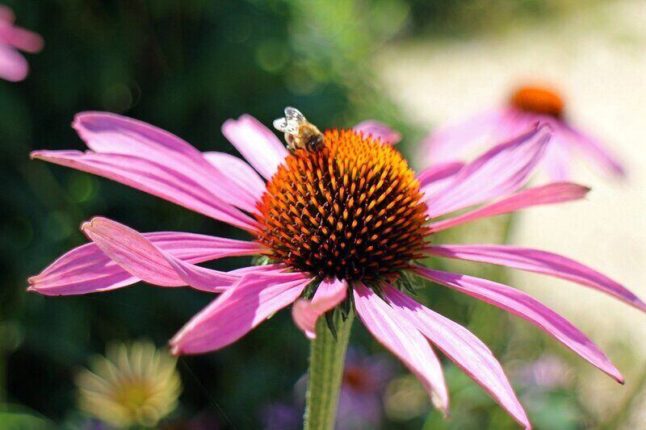
FAQ About Native Plants
Native plants have evolved and adapted to their environment’s conditions, such as the local soil, geography, and climate, without human intervention. Even if the area’s weather is harsh or the local soil has low fertility, native plants have learned to thrive under these circumstances. These plants occur naturally in their native region without human introduction.
Non-native plants do not occur naturally in the area where they currently exist, they are often introduced to the area by human intervention. Non-native plants are native plants elsewhere. For example, a plant can be non-native in your state while native to another state.
A plant is considered invasive if it threatens human health or causes economic or environmental harm. Invasive plants often adapt to a new area with ease, overtake other plants, and spread quickly. Many invasive plants are non-native plants.
How to Include Native Plants in Your Landscape
Curious how you can blend native plants into your landscape? Here are a few garden ideas that will bring vibrancy and wildlife to your yard.
- Rain gardens filter and collect polluted stormwater runoff.
- Garden swales are similar to rain gardens, but instead of collecting and soaking up the runoff, they distribute and move the water to a new area. A rain garden is a basin, whereas a garden swale is a ditch.
- Butterfly gardens are a sustainable habitat for butterflies and caterpillars. Don’t forget to grow some milkweed for those monarch butterflies.
- Water gardens provide a habitat for aquatic organisms. Relaxing water sounds can also help reduce stress.
- Succulent gardens are visually interesting and help save water.
- Moon gardens are beautiful at night and invite nighttime pollinators.
- Meadow and wildflower gardens provide food and shelter for native wildlife.
- Shade gardens help save water by minimizing evaporation.
- Rock gardens are low-maintenance and require little to no water.
How to Find Plants Native to Your Area
If you’re ready to make the switch to native plants, you’ll need to do a bit of homework to discover which plants are native to your area. Visit the National Audubon Society or the National Wildlife Federation and search their native plant databases.
Or you can just check our native plant guides for select states:
- California: 32 Native Plants for California: Flowers, Succulents, Shrubs, and Trees
- Florida: 47 Native Plants for Florida: Flowers, Shrubs, and Trees
- Texas: 30 Native Plants for Texas by Region
Here are more ways you can learn about the best native plants for your landscape:
- Native plant societies: Contact your local native plant society or become a member. You can discover new native plants in your area, attend field trips, receive informative newsletters, and help raise awareness about native plants and their benefits.
- Gardening centers: Visit local gardening centers and nurseries (bring any questions you may have).
- Cooperative extension: Contact your local cooperative extension to learn about the native plants they recommend.
- Lectures and classes: Attend a native plant lecture or class held by your local botanical garden or cooperative extension.
Want a Really Low-Maintenance Landscape?
Native plants bring beauty and serenity to the yard – all while being low-maintenance. Wouldn’t it be nice if your lawn were just as easy to take care of? Take the lawn care burden off your shoulders by hiring a local landscape professional who’s passionate about the work he or she does.
From mowing the lawn to fertilizing the grass, a lawn care pro has you covered. Sit back, smell the flowers, and give your green thumb a rest.
Main Photo Credit: Pexels / Pixabay